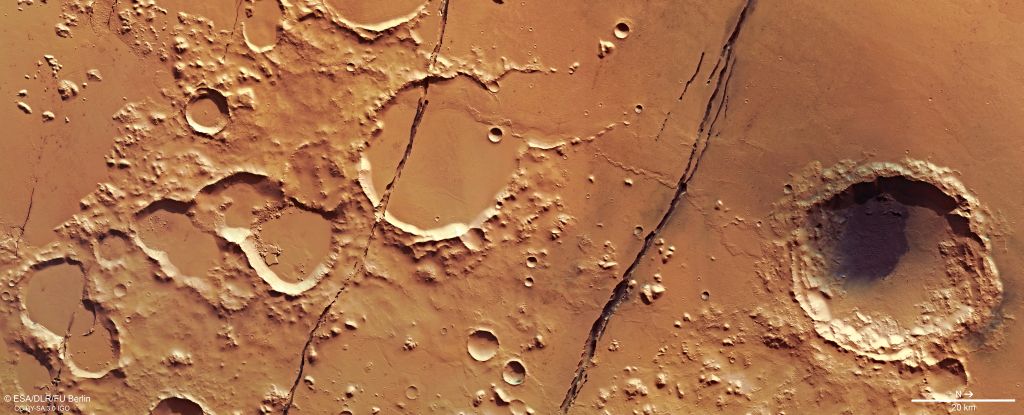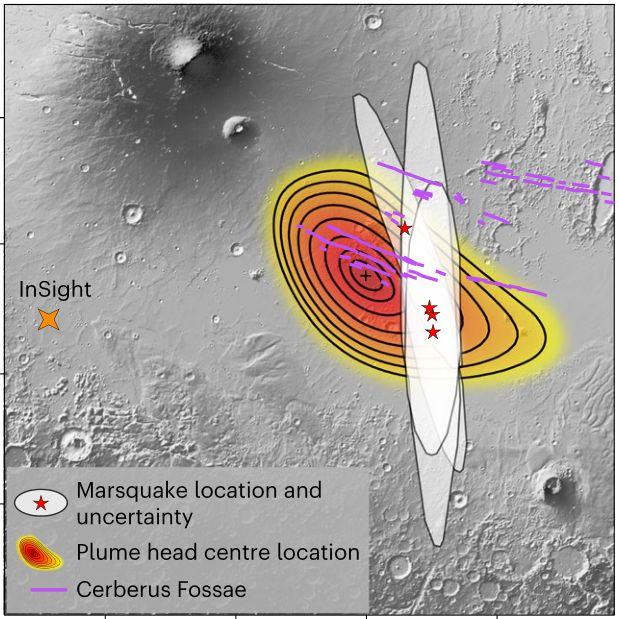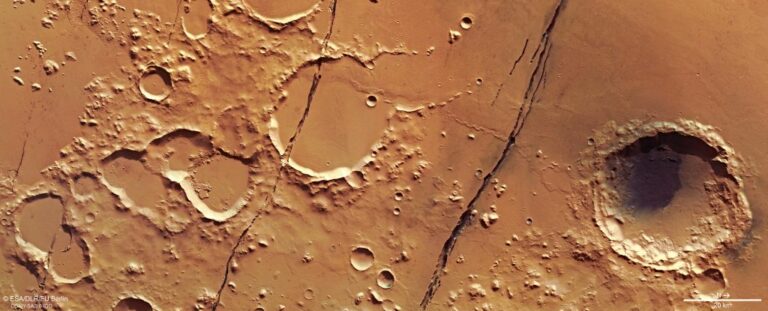Massive Find on Mars Might Fuel Surging Magma Below the Surface
It’s possible that scientists have just discovered the cause of recent volcanism on Mars.
A massive convection plume in the Martian mantle that is 4,000 kilometers (about 2,500 miles) wide may be pushing molten lava up to the surface beneath a large plain known as the Elysium Planitia. Multiple lines of evidence that tantalizingly lead to a volcanic Mars may be explained by this.
According to planetary geophysicists Adrien Broquet and Jeffrey Andrews-Hanna of the University of Arizona, “our results show that the interior of Mars is geodynamically active today and imply that volcanism has been driven by mantle plumes from the formation of the Hesperian volcanic provinces and Tharsis in the past to Elysium Planitia today.”

The inside and outside of Mars have both demonstrated extremely clear indicators of geological death. Its very ancient surface, which appears to lack recent volcanic resurfacing and tectonic action, and the absence of a worldwide magnetic field have been cited as grounds to believe that the interior is primarily made up of hard, unmoving rock.
Significant gaps have been found in the idea of a wholly lifeless Mars as a result of recent observations. For instance, a Mars meteorite that reached Earth recently—perhaps half a billion years ago—showed evidence of mantle convection.
Then, in a fissure system known as the Cerberus Fossae, satellite images showed indications of volcanic surface deposits as young as 50,000 years old.
Then, Mars InSight, a lander that has been keeping an eye on Mars’ innards since November 2018, found that there was a lot of continuing seismic activity that was compatible with volcanism.
Other strange observations have also been made. For instance, the Elysium Planitia’s local gravity field is particularly powerful, which is compatible with some kind of subsurface activity.
In order to find a model that matches the data, Broquet and Andres Hanna gathered topographical, gravity, geological, and seismic information.

They concluded that a mantle plume satisfied all the criteria. These are heated inner upwellings that press on a planet’s core-mantle barrier, driving magma upward and resulting in the formation of crustal hotspots and surface volcanism.
The plume would be at least 3,500 kilometers in diameter and between 95 and 285 Kelvin warmer than its surroundings to fit the reported data, including the epicenters of seismic activity as measured by InSight. That translates to 171 to 513 degrees Fahrenheit, or 95 to 285 degrees Celsius.
This is extremely reminiscent of the Earth’s mantle plumes, the Deccan Traps and the North Atlantic Igneous Province, which powered the prehistoric volcanic activity responsible for the massive surface carving.
The creation of equally big plume heads is anticipated given the lower gravity and greater viscosity of the Martian mantle, according to the researchers, even though Mars is smaller than the Earth.
“Based just on gravity and topographic data, the best-fit plume head center is precisely placed at the middle of the Cerberus Fossae, where both recent volcanism and the majority of marsquakes have been located.”
According to the researchers, Mars would join Earth and Venus as the third planet in the Solar System to have mantle plume activity.
The outcome has some fascinating implications for Mars. Possibly internal heating that might prevent lakes under the Martian surface from freezing solid rather than surface volcanoes pouring lava everywhere. This has ramifications for the search for bacteria on Mars that may be residing in such lakes undetected and leading peaceful lives.
According to Broquet and Andrews-Hanna, “ongoing plume activity shows that Mars is not just seismically and volcanically active today, but also contains a geodynamically active interior.”
The longevity and astrobiological potential of subsurface habitable environments are affected by a plume beneath Elysium Planitia, which also suggests that the seismic activity and volcanic flows on the surface are not isolated occurrences but rather are a part of a regional system that is long-lived and actively sustained.
The research has been published in Nature Astronomy.
Do not forget to share your opinion with us to provide you with the best posts !




0 Comments